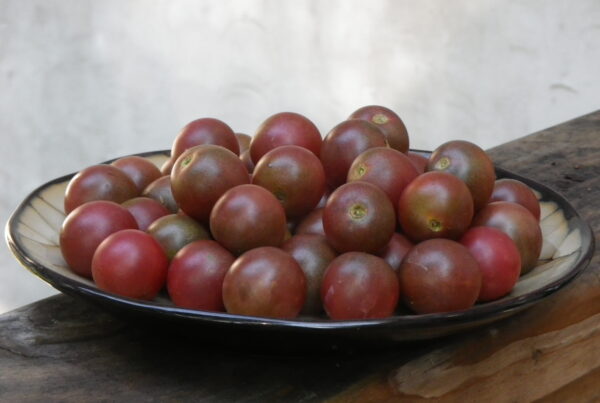By Mark Schonbeck, VABF Policy Liason
2024 Farm Bill
Recent developments and next steps
On Friday, May 17, the House Agriculture Committee released the long-awaited Farm, Food, and National Security Act of 2024 (FFNSA). The 942-page discussion draft arrived just six days ahead of an expected Committee markup on May 23. After an intensive weekend reviewing this draft, the National Sustainable Agriculture Coalition issued this press release on the House Farm bill proposal. In short, this Farm Bill fails our producers, our land, and our food systems in several major ways:
- First, although it keeps Inflation Reduction Act (IRA) conservation funding within conservation programs it does not maintain the climate-smart (mitigation and resilience) focus of this investment. Overall, the bill gives a passing “nod” to climate-smart practices but fails to prioritize effective climate action.
- Second, it restricts USDA authority to utilize Commodity Credit Corporation (CCC) funding to address emerging issues – a move that could severely impact farmers.
- Third, it greatly increases commodity subsidies at an estimated cost of $50 billion over five years – most of which will benefit the largest 0.3% of farming operations, thereby speeding consolidation in the ag sector and forcing more farms out of business.
- Fourth, it prioritizes “precision agriculture technology” in both conservation programs (with higher cost share rates) and in research programs. Precision agriculture is most suited to large scale monoculture operations and offers only modest conservation, water quality, and climate benefits. By investing more in precision ag, these proposals take funding away from more effective approaches such as organic, agroforestry, advanced grazing management, and farmer-led, scale appropriate research.
- Fifth, it reauthorizes key programs such as Sustainable Agriculture Research and Education (SARE) and Organic Research and Extension Initiative (OREI), but only at the same level as the 2018 Farm Bill. Given currency inflation since then, this amounts to a 20-25% funding cut.
On May 23, the House Ag Committee conducted its “markup” of this draft Farm Bill, in which amendments are offered, voted on, and the text is finalized for a committee vote. The bill was reported out of committee (made ready for floor debate and passage) by a vote of 33-21.
A few weeks earlier, on May 1, the Senate Agriculture Committee published a “section by section summary” of its version of the 2024 Farm Bill, the Rural Prosperity and Food Security Act of 2024 (RPFSA). This summary is not the same as a “Farm Bill mark” (draft) to be finalized in committee markup. However, it does provide a detailed roadmap of where the Senate Agriculture Committee is headed with their Farm Bill.
In contrast with the House Farm Bill, as outlined in this NSAC “deep dive,” the Senate summary outlines a bipartisan Farm Bill that is far better than the House version. Specifically, the Senate outline includes:
- Keeping IRA funding in climate smart conservation in working lands programs.
- Increased emphasis on greenhouse gas mitigation and adaptation / resilience throughout the Conservation Title.
- A $4,000 per year minimum contract payment through the Conservation Stewardship Program (CSP).
- Significant steps toward a more equitable food and agriculture system.
- Several improvements in the USDA research portfolio, notably a cross-agency Organic coordinator and increased investment in public cultivar development.
Watch for next steps and calls to action as the Farm Bill process moves forward in Congress. Visit the NSAC website https://sustainableagriculture.net for the latest developments. VABF may also send you a special call to action should opportunities for grassroots action present themselves before the next regular e-newsletter in June.
Position open:
Conservation Scientist at Organic Farming Research Foundation
Applications accepted until the position is filled.
The Conservation Scientist will build institutional knowledge of the conservation benefits of organic production at USDA Natural Resources Conservation Service (NRCS) while also helping highlight the significant funding opportunities available to organic producers through NRCS programs. Through an agreement with NRCS, the Organic Agriculture Conservation Specialist will be an individual with scientific expertise in organic farming systems, including soil health, who will serve as a liaison between OFRF and NRCS.
This position also provides support on other programmatic activities, including: keeping coalition partners up to date on our NRCS work, helping our communications team develop relevant materials, and involvement in our federal advocacy work. This position reports to the Policy & Programs Manager. Click here for more information and how to apply for the position.
Other NSAC News Stories and Blog Posts
Climate-Smart Conservation in High Demand Among Farmers
For years, the Environmental Quality Incentives Program (EQIP) and Conservation Stewardship Program (CSP) have been so oversubscribed that NRCS has had to turn away three out of four applicants. When the Inflation Reduction Act (IRA) made $850 million in conservation funds available to farmers in 2023 to implement climate-smart systems and practices, applications totaled $2.8 billion. Check out NSAC’s blog post on IRA conservation funding on why the Farm Bill must support farmers who want to save their soil and help mitigate the climate crisis.
Under-investment in Organic Research at USDA
Just as USDA-funded and other research has begun to confirm the vital role of organic agriculture in building soil and agroecosystem health and in both climate mitigation and resilience, the USDA seems to be moving in the direction of reducing future investments in organic agriculture. OFRF policy director Gordon Merrick analyzes these trends in an April 30 blog post on organic research investments and outlines what we can do to advocate for more organic research funding.
Local and Regional Food Systems Receive a Boost
USDA announced $40 million in grants through the Local and Regional Healthy Food Financing Initiative Partnership Program, funding several NSAC member organizations and many other partners to build infrastructure, networks, and financial credit for local food systems reaching underserved communities. See also this NSAC blog on other people-powered local food initiatives.
Special State conservation program
James River Buffer Program
Designs and installs riparian forest buffer at no cost to you
If your farm is located within the James River watershed and you would like to plant a forested buffer to protect water quality, provide wildlife habitat, and improve farm biodiversity, check out the James River Buffer Program. The James River Association, the Virginia Department of Forestry, and the Chesapeake Bay Foundation are working with farmers and landowners across the middle and upper James River watershed to restore or create forest buffers that improve the quality of local waterways. The program works with you to select tree species, plants the buffer, and provides maintenance for the first three years at no cost to you. Plantings can include income generating species such as sugar maple for syrup production.






